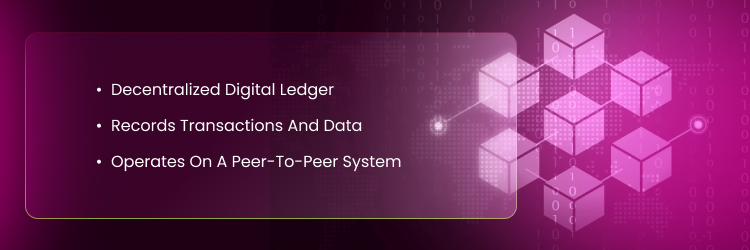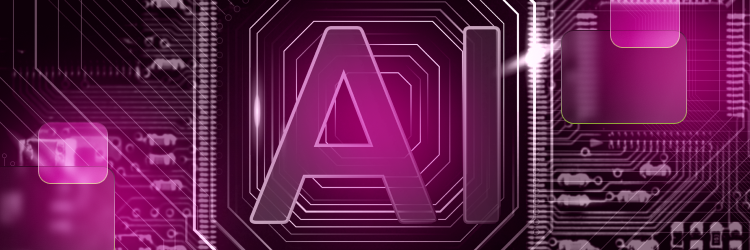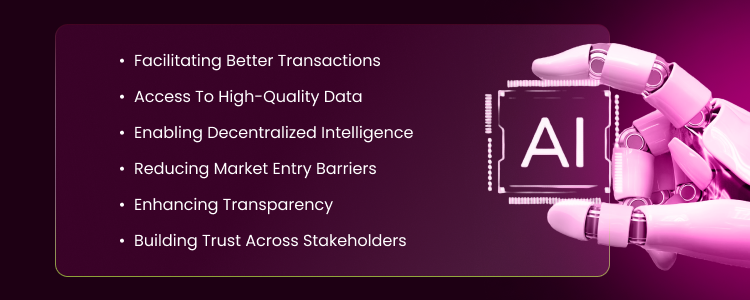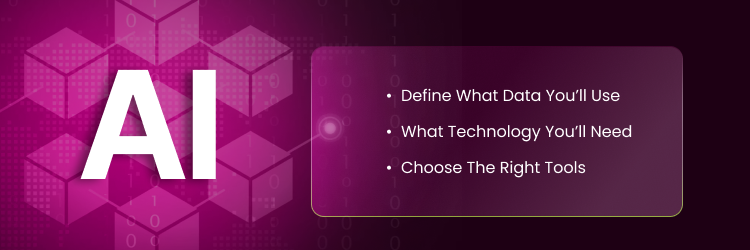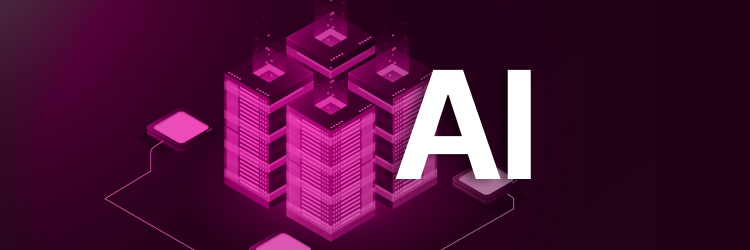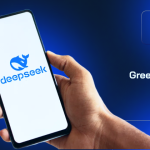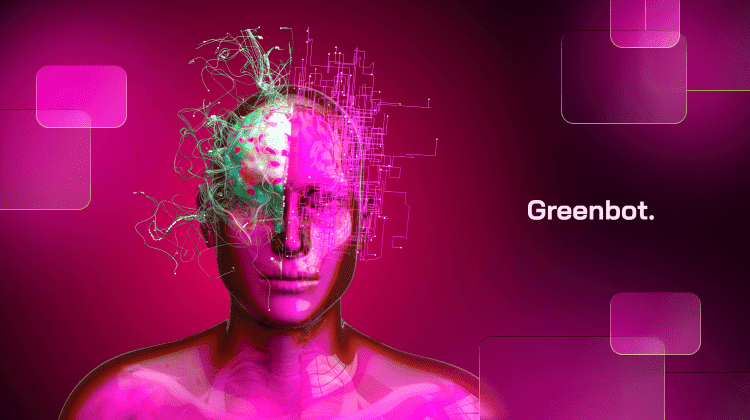
AI and blockchain are no longer just buzzwords—they’re reshaping the way modern applications function. AI brings intelligence, automation, and real-time decision-making, while blockchain ensures security, transparency, and decentralization. Together, they create powerful solutions that drive industries forward, from finance and healthcare to supply chain and gaming.
Imagine AI-powered smart contracts that execute transactions without human intervention or decentralized applications (dApps) that leverage AI for fraud detection. The fusion of AI and blockchain is unlocking possibilities once thought impossible, revolutionizing everything from digital identity management to predictive analytics.
But how exactly does this transformation work? Let’s dive in.
What Is Blockchain?
Blockchain is a decentralized digital ledger that records transactions and data across a distributed network. Unlike traditional databases controlled by central authorities, blockchain operates on a peer-to-peer system where every participant (node) has a copy of the ledger.
Once data is recorded, it becomes immutable, ensuring transparency and security. Instead of relying on banks or centralized servers, blockchain verifies and adds new records through consensus mechanisms like Proof of Work (PoW) or Proof of Stake (PoS).
While blockchain is best known for enabling cryptocurrencies like Bitcoin and Ethereum, its applications extend far beyond finance. It enhances cybersecurity, tracks supply chains in real-time, enables smart contracts, and secures sensitive data in industries like healthcare and digital identity management.
What Are AI and AI Models?
Artificial Intelligence (AI) enables machines to analyze data, recognize patterns, and make decisions with minimal human input. It powers applications in automation, predictive analytics, and real-time problem-solving, transforming industries from healthcare to finance.
AI systems process vast amounts of data using machine learning algorithms, which improve performance over time based on experience. This allows AI to detect trends, optimize processes, and provide insights faster than traditional methods.
AI encompasses various fields, including natural language processing (NLP), which allows systems to understand and generate human-like text. Computer vision enables machines to interpret images and videos, supporting applications in security, healthcare, and automation.
Advanced AI models, like those used in fraud detection, medical diagnostics, and recommendation systems, continuously adapt to improve accuracy and efficiency. As AI evolves, its role in modern applications continues to expand, reshaping industries worldwide.
How AI and Blockchain Complement Each Other
AI and blockchain solve different problems, but together, they enhance security, efficiency, and trust in modern applications. One major way AI and blockchain complement each other is in data integrity. AI relies on massive datasets to improve accuracy, but poor-quality or manipulated data can lead to biased outcomes. Blockchain ensures that data remains unaltered and verifiable, reducing the risk of AI making decisions based on false or compromised information.
Security is another key benefit. AI detects threats and anomalies in real-time, while blockchain protects digital records through encryption and decentralization. This is especially valuable in financial transactions, healthcare records, and identity verification, where fraud and cyberattacks are major concerns.
Smart contracts, which are self-executing agreements stored on a blockchain, also benefit from AI. Traditional smart contracts follow predefined rules, but AI can make them more dynamic by analyzing real-world data and adjusting contract terms based on external conditions. This is useful in industries like insurance, supply chain management, and automated financial services.
AI-powered automation improves blockchain operations. Tasks such as verifying transactions, managing decentralized networks, and optimizing resource distribution become more efficient when AI is integrated. AI can predict network congestion and adjust transaction fees dynamically to prevent delays.
This combination is already changing industries. In healthcare, blockchain protects medical records while AI helps with diagnosis. In supply chains, AI tracks shipments, and blockchain verifies product authenticity. Even in art, AI-generated music and images can be sold as NFTs, with blockchain proving ownership.
Convergence of AI, Blockchain, and Spatial Computing
The convergence of AI, Blockchain, and Spatial Computing is a triad of technologies that is redefining experiences, turning passive viewers into active participants in blended physical and digital environments. Spatial computing includes augmented reality (AR), virtual reality (VR), and mixed reality (MR), allowing us to transcend traditional two-dimensional interactions and immerse ourselves in dynamic, interactive worlds.
Blockchain and Web3 are improving our approach to digital identity and transactions, creating a decentralized framework that enhances security and empowers individuals with control over their data and digital assets. This decentralized approach ensures that personal information and digital transactions are secure, transparent, and tamper-proof.
Generative AI enables the rapid design and deployment of personalized, dynamic digital environments, enhancing creativity and providing individualized experiences tailored to a person’s needs and preferences. By combining these technologies, we can create immersive, secure, and personalized digital experiences that transform how we interact with the digital world.
Use Cases of AI and Blockchain
Healthcare
The healthcare industry is being transformed by these advanced technologies. AI enhances patient care by providing accurate diagnostics and personalized treatment plans. Blockchain improves supply chain transparency and secures medical records, ensuring that healthcare organizations can operate more efficiently and patients can trust the safety of their data.
Real-world examples in healthcare:
- Medicalchain: Lets patients store and share medical records securely.
- Akiri: Uses blockchain to move healthcare data safely.
- Nebula Genomics: Creates a secure marketplace for encrypted genetic data.
- Guardtime: Protects healthcare systems from data breaches.
- FarmaTrust: Tracks medicine supply chains to prevent counterfeit drugs.
Financial services
AI and blockchain make financial transactions safer and more efficient. AI detects fraud by spotting suspicious activity. Blockchain ensures all transactions are secure and cannot be altered.
Life sciences
AI and blockchain drive innovation in life sciences by ensuring data integrity and accelerating drug discovery. Blockchain provides a transparent and tamper-proof record of research data. AI analyzes complex datasets to identify potential drug candidates and optimize trial processes. This synergy speeds up development, enhances regulatory compliance, and reduces costs.
Supply chain
AI and blockchain work together to create transparent and efficient supply chains. For instance, blockchain technology can track products from origin to consumer, ensuring authenticity, ethical sourcing, and compliance, such as verifying organic certifications. AI processes this blockchain data to predict disruptions, optimize logistics, and automate decision-making. Examples of this in real-world applications include IBM Food Trust and VeChain.
AI and Blockchain in Cryptocurrency
One of the popular examples of AI tools is the AI crypto trading bot. These bots analyze and learn from large amounts of data through machine learning processes. Using this capability, they help predict market trends and forecast volatility. For example, bots like Cryptohopper execute trades based on algorithmic intelligence. These AI tools also often come with risk assessment features to help ensure losses are kept minimal.
Blockchain’s decentralized architecture secures cryptocurrency transactions, eliminating single points of failure. Every transaction is cryptographically hashed and added to an immutable ledger, preventing tampering.
In addition, AI enhances fraud detection in crypto by identifying patterns that are difficult for humans to spot. Machine learning algorithms flag anomalies like sudden wallet activity spikes or unusual transaction routes, matching them with known fraud tactics like phishing or wash trading. For example, platforms like Chainalysis use AI to trace illicit crypto flows across blockchains.
AI-Powered Trading Platforms
- Kryll: Automates crypto trading with AI-driven strategies.
- 3Commas: Uses AI to analyze market signals and execute trades.
- TradeSanta: Optimizes crypto trading with smart automation.
- Coinrule: Allows users to copy top traders’ strategies with AI bots.
Benefits of Combining AI and Blockchain
Stronger security, data integrity, and transparency
Blockchain technology keeps AI data secure and unchangeable. Every AI action is recorded, making it easy to track and verify. In healthcare, this ensures patient data remains protected while allowing regulators to check for compliance. Sensitive information, such as medical histories or prescription records, is encrypted and stored across decentralized nodes, reducing the risk of breaches or unauthorized changes.
Industries like finance and identity verification benefit from this security. AI algorithms analyzing financial transactions for fraud can log every step onto a blockchain, making it impossible to alter records without detection. This combination strengthens data integrity and prevents manipulation, building confidence in AI-driven decisions.
Better data management
AI needs large, accurate datasets to function effectively. Blockchain stores this data securely, preventing tampering or fraud. In farming, for example, AI sensors collect soil data, which is then stored on blockchain to ensure reliability. Farmers and suppliers can access real-time, unaltered data to make informed decisions about crop yields, fertilizer use, and weather impact.
In research and analytics, blockchain ensures AI works with verified data sources. Scientific studies, clinical trials, and market predictions rely on clean, unbiased information. Blockchain prevents data corruption, while AI processes vast datasets faster, making complex problem-solving more reliable.
Smarter automation
AI can analyze situations, and blockchain can act on them automatically. In insurance, AI detects fraud, and blockchain instantly approves or denies claims, reducing manual processing time while maintaining accuracy. AI-powered risk assessment models evaluate claims, with blockchain ensuring the process remains transparent and tamper-proof.
In supply chains, AI predicts demand, and blockchain automates inventory management without human input. This prevents overstocking or shortages and ensures seamless logistics. AI-driven systems can also optimize delivery routes in real time based on weather or traffic conditions, while blockchain securely verifies transactions and shipments.
More trust and accountability
AI decisions can sometimes feel like a “black box.” Blockchain creates a clear audit trail, showing how and why decisions were made. This is crucial in finance, where AI-powered loan approvals must follow regulations and remain transparent. Each step, from credit evaluation to approval or rejection, is logged on blockchain, ensuring accountability for regulators and customers.
This transparency also improves hiring, legal contracts, and content moderation. AI-driven hiring tools can record decisions on blockchain, ensuring fairness. In digital media, blockchain verifies content authenticity while AI detects misinformation, creating a more reliable online space.
Improved scalability and efficiency
AI and blockchain together enhance scalability and efficiency across industries. AI processes vast amounts of data, identifying patterns and trends that drive better decision-making. Blockchain ensures that this data remains secure, transparent, and tamper-proof, maintaining trust in automated processes.
This combination is particularly valuable in industries handling large-scale operations, such as finance, healthcare, and government systems. AI speeds up data analysis, while blockchain guarantees data integrity, reducing risks associated with fraud and misinformation. Organizations can leverage this integration to scale their services, improve accuracy, and respond more effectively to changing conditions.
How Blockchain Can Transform the AI Ecosystem
Blockchain can potentially address AI’s core weaknesses, such as non-transparent decision-making, data vulnerabilities, and centralization.
Here are the highlights of how blockchain can transform the AI ecosystem:
Facilitating Better Transactions
Secure, efficient transactions between AI systems become possible through smart contracts. For instance, autonomous AI agents on platforms like Fetch.ai can negotiate data-sharing agreements on decentralized marketplaces. Payments are automated and tamper-proof, eliminating intermediaries and reducing friction in multi-party AI collaborations.
Access to High-Quality Data
AI training data becomes verifiable and immutable. Ocean Protocol, for example, provides a decentralized data exchange platform, allowing AI models like generative AI systems to train on diverse, auditable datasets. This approach reduces bias and enhances reliability.
Enabling Decentralized Intelligence
Distributed AI networks allow models to collaborate without central control. SingularityNET provides a global marketplace where developers contribute AI services. Transparency and fair revenue distribution are maintained, ensuring a balanced ecosystem.
Reducing Market Entry Barriers
Lower costs for AI developers become achievable through shared resources. Startups can access decentralized GPU networks (e.g., Render Network) for affordable model training or use blockchain-based crowdfunding (via DAOs) to secure funding. This disrupts Big Tech’s monopoly, fostering a more competitive AI landscape.
Enhancing Transparency
AI training and decision-making become more transparent by recording every input and logic step on an immutable ledger. As AI architectures and training processes become more open and easier to track, oversight improves significantly.
Building Trust Across Stakeholders
Blockchain ensures transparency, building trust between AI systems, users, and developers. Its ability to provide clear, verifiable records is key to gaining stakeholder confidence. For example, IBM’s Food Trust uses blockchain to allow users to verify sustainability claims, allowing consumers to trace eco-friendly practices back to their source.
How to Implement AI and Blockchain Together
To combine AI and blockchain, start with clear goals. Does your project need decentralization, AI-powered decision-making, or both? Define what data you’ll use and what technology you’ll need.
Choose the right tools. For blockchain, options include Ethereum (smart contracts) and Solana (fast transactions). For AI, use frameworks like TensorFlow or PyTorch. Platforms like SingularityNET and Fetch.ai make integration easier. Research what best fits your needs.
Build the right team. You’ll need:
- Blockchain developers skilled in Solidity or Rust.
- AI engineers who understand machine learning.
- Industry experts (finance, healthcare, etc.) for real-world insights.
Test before scaling. Run small pilot projects to check costs, efficiency, and compliance. Make sure your solution aligns with business goals and regulations.
Monitor and improve. Track key performance indicators (KPIs) like transaction speed, AI accuracy, and user adoption. Use AI to detect blockchain issues and update both technologies as needed.
Key Tools and Platforms for Integration
- IBM Blockchain + Watson: Combines enterprise blockchain with AI-driven analytics for supply chain and finance.
- Ocean Protocol: Decentralized data marketplace for training AI models securely on the blockchain.
- Microsoft Azure AI & Blockchain: Offers pre-built templates for integrating machine learning with Ethereum or Hyperledger.
- Chainlink: Connects smart contracts to off-chain AI APIs for real-world data triggers.
- Neural: Open-source platform for decentralized AI prediction markets on the blockchain.
Challenges of Combining AI and Blockchain
We’ve seen several benefits that combining AI and blockchain systems can bring to healthcare service providers and other sectors. However, merging these two technologies comes with its fair share of challenges.
First off, scalability and performance issues arise from conflicting demands. Blockchain’s decentralized validation slows transactions, while AI requires rapid data processing.
Data privacy and compliance also clash with blockchain transparency. GDPR’s “right to be forgotten” conflicts with blockchain immutability, and AI models trained on public ledger data risk exposing sensitive patterns. Privacy-focused blockchains (e.g., Monero) and federated learning offer partial fixes, but they introduce trade-offs in transparency or accuracy.
Integration complexities stem from mismatched infrastructures. AI usually relies on centralized cloud GPUs, while blockchain thrives on decentralized nodes. Ensuring seamless communication between these systems demands middleware like Oracles or custom APIs. Plus, aligning governance—decentralized blockchain vs. centralized AI control—creates organizational friction.
Future Trends in AI and Blockchain
AI and blockchain will continue to reshape industries. Smart contracts will become more advanced, adjusting loan rates and managing financial agreements in real-time. Decentralized finance (DeFi) will also benefit from AI’s ability to predict market trends.
Decentralized AI will give more people access to machine learning. Platforms like SingularityNET let users create and sell AI models, reducing reliance on Big Tech. Blockchain ensures fair payments and prevents data bias.
In the metaverse, AI and blockchain will power virtual economies. Blockchain secures ownership of digital assets like land and avatars. AI makes virtual worlds more interactive by creating lifelike characters and personalized experiences. Platforms like Decentraland are already making this a reality.
Regulations and ethics will become key topics. AI decisions recorded on blockchain could improve transparency and public trust. However, laws like the EU’s AI Act may create challenges for decentralization. New rules will likely focus on explainable AI and blockchain-based accountability.
FAQs
How is AI used in blockchain?
AI enhances blockchain technology by improving efficiency and security. It predicts transaction data trends, detects fraud, and automates smart contracts. AI-powered tools like Chainalysis use AI algorithms to track illicit activities on the bitcoin blockchain.
What are the synergies between blockchain and AI?
AI and blockchain technology work together to improve security, automation, and efficiency. AI processes big data, while blockchain ensures data integrity through an immutable record. This seamless integration is transforming supply chain management, finance, and healthcare organizations.
What industries benefit the most from AI and blockchain integration?
Many industries are using these two technologies to improve security and decision-making.
- Healthcare providers: Protect medical records, secure clinical trial data, and analyze data usage for better treatments.
- Financial institutions: Detect fraud, automate compliance, and improve business processes with AI.
- Supply chain management: Track products, verify authenticity, and streamline logistics.
- Life sciences: Speed up drug discovery and ensure data security in research.
Are there risks to combining AI and blockchain?
Despite its benefits, blockchain AI faces challenges. Computing devices must handle large workloads, which can slow down processes. Data storage conflicts with privacy laws, like GDPR, since blockchain keeps a publicly accessible and distributed ledger. Additionally, business world adoption is slowed by limited access to experts and resources.
However, these emerging technologies continue to evolve. Companies investing in blockchain applications and AI projects will unlock actionable insights and reshape the digital landscape in the past few years.
Final Thoughts
Artificial intelligence and blockchain are changing industries. AI analyzes data and makes smart decisions. Blockchain keeps that data secure and transparent. Together, they solve big challenges in security, automation, and trust.
As these technologies grow, they will drive innovation in healthcare, finance, and supply chains. Businesses that use them can improve efficiency, reduce costs, and stay ahead of the competition.
Now is the time to explore how AI and blockchain can work for you. Start integrating them to unlock new opportunities and build smarter, safer solutions.


